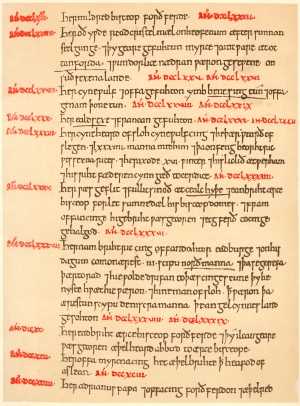UC Santa Cruz undergraduate Jonathon Allen garnered some media attention recently when his curiosity and broad scientific interests led to an intriguing discovery in the historical archives. Allen, a biochemistry major, was listening to a podcast from Nature magazine during finals week in June when he heard a story about a cosmic mystery from the year AD 774. Using the Internet, he quickly tracked down a reference in an ancient text to a "red crucifix" that appeared in Britain's evening sky that year.
Allen's letter to Nature about his discovery prompted a Nature news story, as well as coverage from UPI, Scientific American, and the Knight Science Journalism Tracker.
The scientific mystery began with a group of researchers in Japan who found a spike in carbon-14 levels in the growth rings of Japanese cedar trees dating to AD 774. The researchers said the extra carbon-14 probably came from a burst of high-energy radiation striking the upper atmosphere.
"I thought to myself, if there was some sort of mysterious stellar event that caused this, there would be some written accounts of it," Allen said in a podcast accompanying the Nature news story. He found the reference to the "red crucifix" among the eighth-century entries in the Anglo-Saxon Chronicle at the Avalon Project, an online library. Also in 774, "the Mercians and the men of Kent fought at Otford; and wonderful serpents were seen in the land of the South-Saxons."



